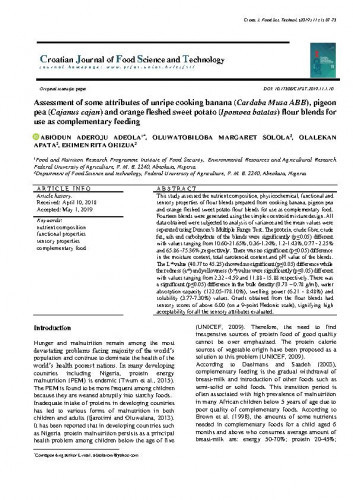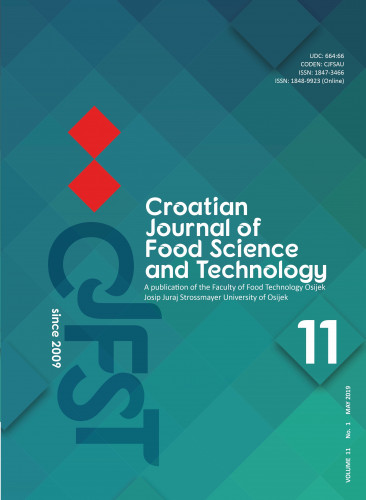This study assessed the nutrient composition, physicochemical, functional and sensory properties of flour blends prepared from cooking banana, pigeon pea and orange fleshed sweet potato flour blends for use as complementary food. Fourteen blends were generated using the simplex centroid mixture design. All data obtained were subjected to analysis of variance and the mean values were separated using Duncan’s Multiple Range Test. The protein, crude fibre, crude fat, ash and carbohydrate of the blends were significantly (p≤0.05) different with values ranging from 10.60-21.65%, 0.36-1.24%, 1.2-1.43%, 0.77 – 2.25% and 65.86 -75.36%, respectively. There was no significant (p≤0.05) difference in the moisture content, total carotenoid content and pH value of the blends. The L* value (40.77 to 45.25) showed no significant (p≤0.05) difference while the redness (a*) and yellowness (b*) value were significantly (p≤0.05) different with values ranging from 2.32 – 4.59 and 11.88 – 15.88 respectively. There was a significant (p≤0.05) difference in the bulk density (0.73 – 0.78 g/ml), water absorption capacity (122.05-178.10%), swelling power (6.21 – 8.48%) and solubility (3.77-7.30%) values. Gruels obtained from the flour blends had sensory scores of above 6.00 (on a 9-point Hedonic scale), signifying high acceptability for all the sensory attributes evaluated.
Sažetak

 Croatian journal of food science and technology : a publication of the Faculty of Food Technology Osijek : 11,1(2019) / editor-in-chief Jurislav Babić.
Croatian journal of food science and technology : a publication of the Faculty of Food Technology Osijek : 11,1(2019) / editor-in-chief Jurislav Babić.